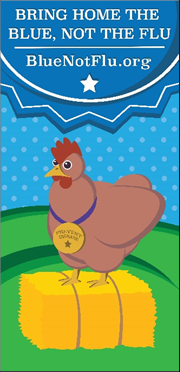Examples of STEM Partnerships
We work with partners in all sectors to build and sustain a strong and competent public health workforce and extend the reach of our education and workforce programs. Here are some examples of what it looks like to partner with CDC.
CDC works with other federal agencies to fund and support the research and application of STEM for public health.
- National Science Foundation: CDC’s National Institute for Occupational Safety and Health (NIOSH) partners with NSF to make funding available to study the integration of robotics technologies in the workplace. Projects have aimed to reduce workers’ exposures to hazards through the development and use of collaborative robots, or cobots. Other research at NIOSH studies emerging robotic technologies, such as wearable robotics or powered exoskeletons, remotely controlled or autonomous vehicles and drones, and future robots using advanced artificial intelligence.
- NASA: This partnership extends back to 1964pdf icon, when NASA approached CDC for help to ensure that germs from Earth do not get transported into space. More recently, CDC experts consulted with NASA astronauts about how COVID-19 impacted life on the International Space Stationexternal icon. CDC’s National Environmental Public Health Tracking program collaborates with NASA on scientific research into the health effects of environmental hazards and environmental health disparities.
Partnerships and collaborations with academic institutions and associations support STEM education, hands-on applied learning, public health research, and professional development. CDC supports partners at all levels of learning.
- High Schools: CDC Museum helped The Walker School, a high school in Georgia, start a public health concentration for its students. The Museum places selected students in internships across the agency yearly.
Academic partnerships produce tools with immediate public health applications. For example, CDC teamed up with the Georgia Tech Research Institute to create dashboards for the COVID Data Tracker.
Colleges and Universities: Partnerships with universities provide undergraduate and graduate students, faculty, and researchers the chance to apply technological and engineering design methods to real-world public health problems. Activities can include education, training, research, scientific exchange, and start-up funding for collaborative projects.The Prevention Epicenters Program is a unique research program through CDC’s Division of Healthcare Quality and Promotion. The program funds centers at universities across the country so that academic leaders in healthcare epidemiology can work together and with CDC to conduct innovative infection control and prevention research.
The Prevention Research Centers is a network of 26 academic institutions funded by CDC’s Division of Population Health to conduct applied public health prevention research. They develop, test, and/or evaluate public health interventions for wide application, particularly in underserved communities, based on the latest science.
- Professional Associations: Academic Partnerships to Improve Health creates alliances among CDC and academic associations that represent colleges and universities for the education of public health professionals, physicians, and nurses. These partnerships focus on enhancing the teaching of population health concepts, aligning academic approaches and field experience with current public health priorities, strengthening links between academic and public health practice, and providing students with hands-on experience working with communities and public health partners.
The complex problems that public health aims to solve often require expertise from professionals in a variety of fields and disciplines. Here are two examples of CDC programs that engage partners from multiple sectors.
-
A unique STEM-related research partnership for public health is the Oak Ridge Institute for Science and Education (ORISE) Research Participation Program. The program is administered under an agreement between CDC and the U.S. Department of Energy. It provides college and university faculty, students, and post-graduates with opportunities for hands-on participation in research and development activities at CDC laboratories. ORISE fellows enhance their professional development in science, math, and engineering.
- CDC established the Influenza and Zoonoses Education Among Youth in Agriculture program as a joint collaboration with the United States Department of Agriculture (USDA), the Council of State and Territorial Epidemiologists, selected state human and animal health departments, and their state and local youth agriculture groups. This One Health collaboration is designed to educate youth and their communities about zoonotic infections and prevention behaviors. Through the Youth in Agriculture program, human health, animal health, and agricultural communities work together to promote more effective disease prevention and preparedness.
